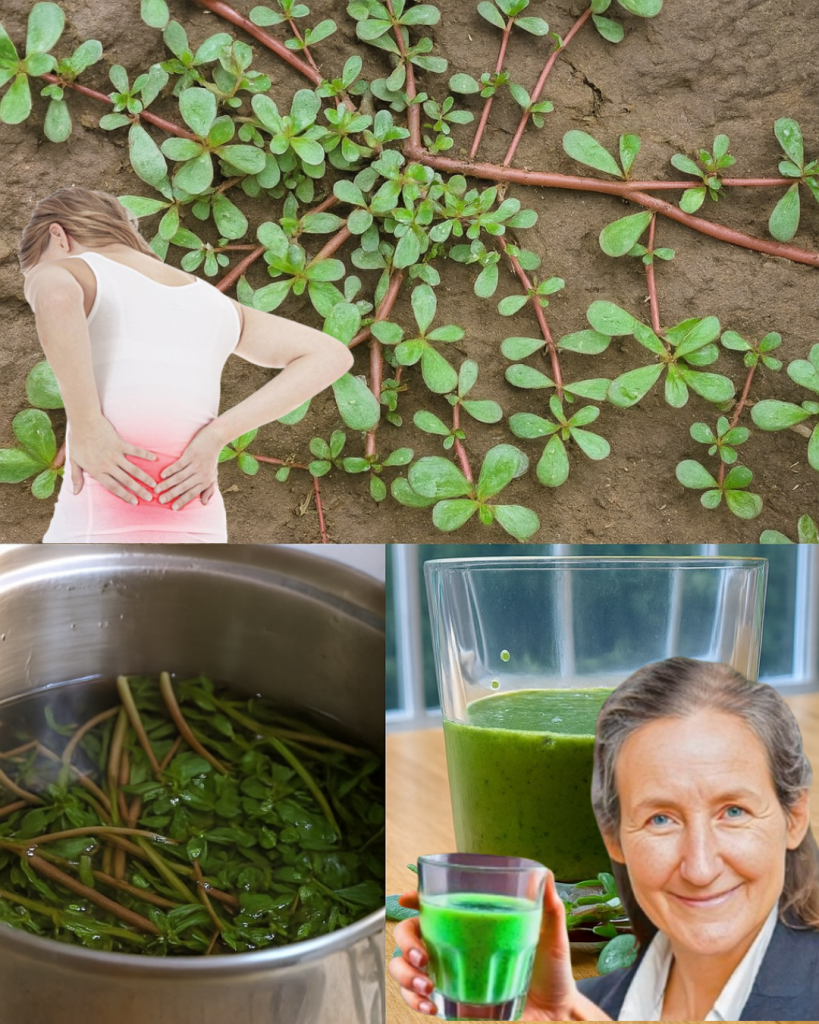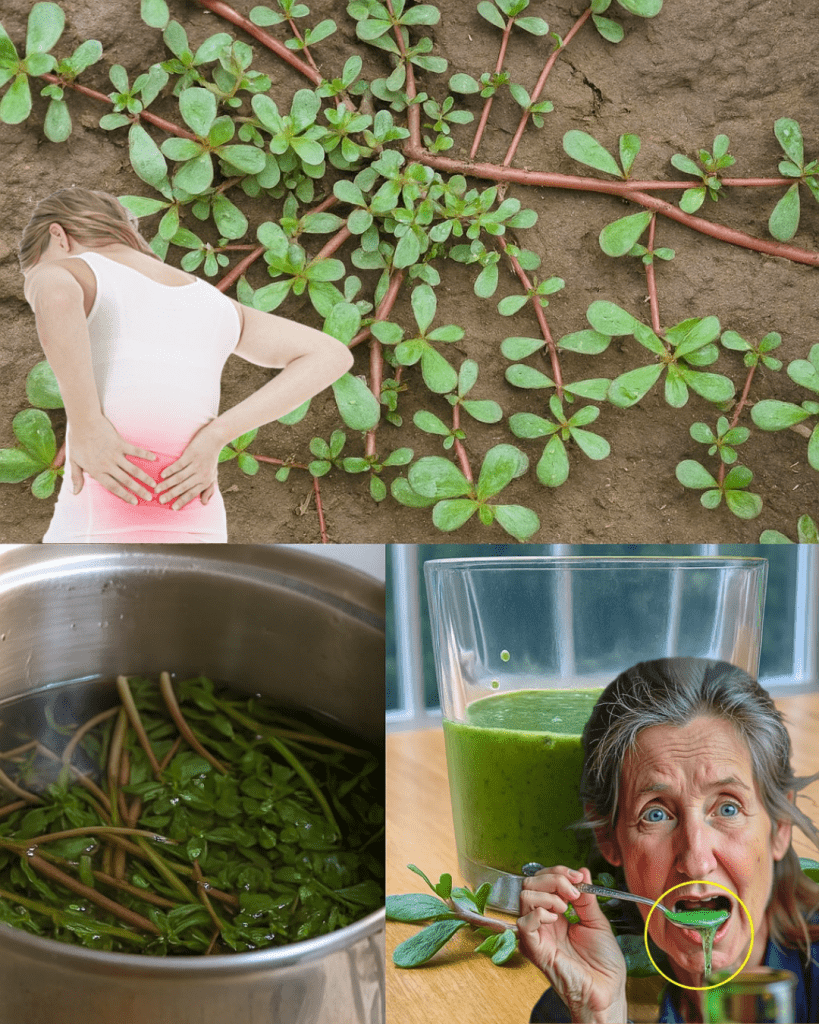Have you ever spotted a low-growing, succulent plant in your garden and dismissed it as a pesky weed? If it’s purslane (Portulaca oleracea), you might be uprooting a hidden gem. Often misunderstood, purslane is not just a weed—it’s a nutritional powerhouse with a tangy, lemony flavor that can transform your meals and boost your health. Instead of pulling it out, let’s explore why this humble plant deserves a spot in your garden and kitchen. From its impressive nutrient profile to its culinary versatility, here are seven compelling reasons to embrace purslane, along with easy recipes to make it a star on your plate.

Why Purslane Deserves Your Attention
Purslane has been cherished for centuries in cuisines worldwide, from Mediterranean salads to Asian stir-fries. Yet, in many gardens, it’s mistaken for an intruder. This resilient plant thrives in tough conditions, spreading its fleshy leaves across sunny patches of soil. Rich in vitamins, minerals, and omega-3s, purslane offers health benefits that rival trendy superfoods like kale or spinach. Ready to rethink that “weed”? Let’s dive into the reasons why purslane is worth keeping—and eating.
The Health Benefits of Purslane
Purslane isn’t just a garden survivor; it’s a nutritional champion. Here’s why adding it to your diet can be a game-changer for your well-being.
1. Packed with Essential Nutrients
Purslane is a vitamin and mineral goldmine. It’s loaded with vitamins A, C, and E, which support skin health, immunity, and cell protection. You’ll also find B vitamins for energy, plus minerals like magnesium, potassium, and calcium for strong bones and muscles. A single cup of purslane delivers a nutrient boost that rivals many leafy greens, making it a must-have for health-conscious eaters.
2. A Rare Plant-Based Source of Omega-3s
Unlike most leafy greens, purslane contains alpha-linolenic acid (ALA), a type of omega-3 fatty acid. Omega-3s are famous for supporting heart health and reducing inflammation. For vegetarians or those looking to cut back on fish, purslane is a fantastic plant-based way to get these essential fats. Sprinkle it in salads or smoothies for a heart-healthy kick.
3. Antioxidant Powerhouse
Purslane is rich in betalain pigments and other antioxidants that fight oxidative stress. These compounds help protect your cells from damage, potentially lowering the risk of chronic diseases like cancer or diabetes. By including purslane in your meals, you’re giving your body a natural defense system. 🌿
4. Fights Inflammation
Thanks to its omega-3s and antioxidants, purslane has anti-inflammatory properties. This makes it a great choice for those dealing with conditions like arthritis or inflammatory bowel issues. Regular consumption may help ease discomfort and promote overall wellness.
5. Supports Weight Management
Low in calories but high in fiber, purslane is a dieter’s dream. The fiber keeps you feeling full longer, curbing overeating, while supporting healthy digestion. If you’re aiming to maintain or lose weight, purslane’s satisfying crunch makes it a smart addition to meals.
6. Boosts Heart Health
The combination of omega-3s, potassium, and antioxidants in purslane works together to promote cardiovascular health. These nutrients can help lower blood pressure, reduce cholesterol, and improve circulation. Adding purslane to your diet is a simple way to show your heart some love.
7. Strengthens Immunity
With a hefty dose of vitamin C, purslane is an immune system ally. Vitamin C helps your body fight off infections and recover faster from colds or flu. Eating purslane regularly can give your defenses the extra support they need, especially during cold and flu season.
How to Enjoy Purslane in Your Kitchen
Now that you know why purslane is a health hero, let’s talk about how to use it. Its crisp texture and tangy flavor make it a versatile ingredient for salads, stir-fries, and even sandwiches. Below are three easy, delicious recipes to help you make the most of this garden treasure. Each recipe is quick to prepare and highlights purslane’s unique taste. 🔥
Recipe 1: Purslane and Tomato Salad
This refreshing salad is perfect for summer lunches or as a side dish. It’s light, colorful, and bursting with flavor.
Ingredients:
- 2 cups fresh purslane leaves, washed and dried
- 2 cups cherry tomatoes, halved
- ¼ cup red onion, thinly sliced
- 2 tablespoons extra-virgin olive oil
- 2 tablespoons balsamic vinegar
- Salt and pepper to taste
Instructions:
- In a large bowl, combine purslane leaves, cherry tomatoes, and red onion.
- In a small bowl, whisk together olive oil, balsamic vinegar, salt, and pepper to create the dressing.
- Drizzle the dressing over the salad and toss gently to coat.
- Serve chilled for a crisp, tangy dish that pairs well with grilled meats or crusty bread.
Prep Time: 10 minutes | Serves: 4
Recipe 2: Purslane and Chickpea Stir-Fry
This hearty stir-fry is a quick weeknight meal that’s both nutritious and satisfying. The purslane adds a fresh, lemony note to the savory chickpeas.
Ingredients:
- 2 cups fresh purslane leaves, washed
- 1 can (15 oz) chickpeas, drained and rinsed
- 1 red bell pepper, thinly sliced
- 1 small onion, finely chopped
- 2 cloves garlic, minced
- 1 tablespoon soy sauce
- 1 teaspoon sesame oil
- ½ teaspoon red pepper flakes (optional, for heat)
Instructions:
- Heat sesame oil in a large skillet or wok over medium-high heat.
- Add onion and bell pepper, stir-frying for 3–4 minutes until slightly softened.
- Stir in garlic and cook for 1 minute until fragrant.
- Add chickpeas and purslane, stir-frying for 2–3 minutes until the purslane wilts.
- Drizzle with soy sauce and toss in red pepper flakes if using. Cook for an additional 2 minutes.
- Serve hot over rice or quinoa for a complete meal.
Prep Time: 15 minutes | Serves: 3
Recipe 3: Purslane and Feta Stuffed Pita
This portable, flavorful pita is perfect for lunch on the go or a quick snack. The creamy feta complements purslane’s tanginess.
Ingredients:
- 1 cup fresh purslane leaves, washed and dried
- ½ cup crumbled feta cheese
- 2 tablespoons Kalamata olives, pitted and sliced
- 2 whole-grain pita bread rounds
- 2 tablespoons Greek yogurt (optional, for creaminess)
Instructions:
- Cut pita rounds in half to create pockets.
- Stuff each pita half with purslane leaves, crumbled feta, and Kalamata olives.
- For extra richness, drizzle Greek yogurt inside each pocket.
- Serve immediately as a healthy, handheld meal or wrap for later.
Prep Time: 10 minutes | Serves: 2

Tips for Growing and Harvesting Purslane
If you’re convinced to keep purslane in your garden, here are some tips to make the most of it:
- Grow it easily: Purslane thrives in sunny, well-drained soil and requires little care. It’s drought-tolerant and spreads quickly.
- Harvest wisely: Pick leaves in the morning when they’re crisp and tender. Use scissors to snip stems, leaving some to regrow.
- Store properly: Keep fresh purslane in a damp cloth in the fridge for up to a week.
- Plant intentionally: If your garden lacks purslane, buy seeds from a nursery—it’s an easy addition to your edible landscape. ✅
Why Purslane Is a Garden and Kitchen Must-Have
Purslane is more than a weed—it’s a superfood with unmatched versatility. Its nutrient density, omega-3 content, and anti-inflammatory benefits make it a health-boosting addition to any diet. Plus, its tangy flavor elevates dishes from simple salads to hearty stir-fries. By letting purslane thrive in your garden, you’re not only saving time on weeding but also gaining a free, delicious ingredient. So, next time you spot those succulent leaves creeping across your garden, don’t pull them out. Harvest them, cook with them, and savor the benefits of this unsung hero. Your body—and taste buds—will thank you.
Word count: 820









